Look at the Lamborghini Countach. Once you have seen this, you will be able to recognise a supercar anywhere. Conversely, if you see modern supercars and see the Countach thereafter, it will be obvious that the latter is one of them. For, this car, in its way, defined what the supercar would look like, well, at lest for the next 50-odd years!
Conceptually, however, it was not really the definitive supercar. The credit for that goes to its predecessor, the Miura. Ever since the Mercedes Simplex of 1902, it had become the convention for cars to have engines in front driving the rear wheels with the passenger compartment behind the one for the engine. And while some cars like the Tatra, Volkswagen and Porsche hung the engine behind the passengers, pretty much nothing put the engine amidships. And even rear engines were more the exception than the rule.
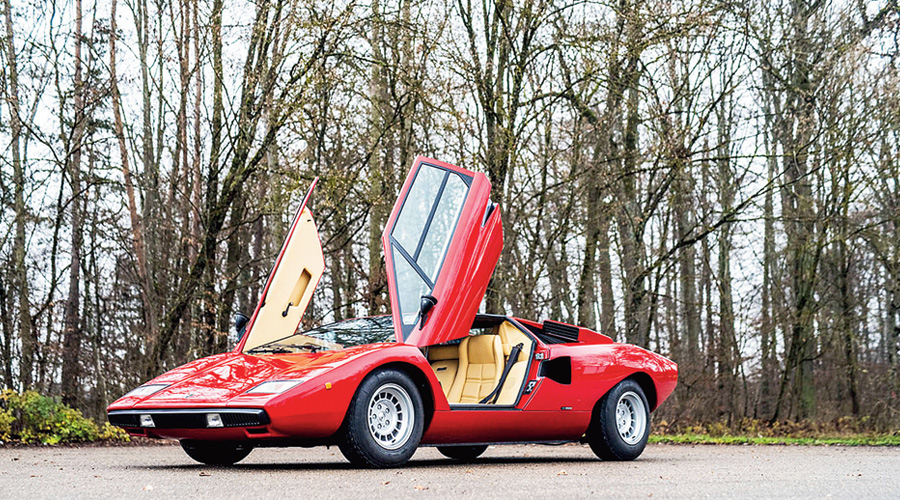
To its legions of fans then, the Countach could possibly have become a supercar just on the strength of its scissor doors, but there was much more
A notable exception was the Auto Union grand prix racer of the 1930s, in which the driver sat ahead of the engine and the engine sat ahead of the rear axle. It was reputed to be quite a handful to deal with, riding as it did on skinny tyres, but the idea was to improve handling and balance by spreading the load evenly over the two axles. But even race cars that followed didn’t take to that for a substantial amount of time although today most racers take that layout as standard. Naturally, then, it isn’t surprising that sportscars of the time, too, stuck largely to the front engine layout — till the Miura came along in 1966, that is.
Ferrari, too, it seemed, was not sure about the layout although it followed the Miura a year later with the Dino 206 GT in 1967, a car on which Enzo Ferrari didn’t put the Ferrari name ever even though it was named after his son. It was only after the success of this layout had been tested for a few years that the first mid-engined Ferrari, the Berlinetta Boxer, came out in 1973.
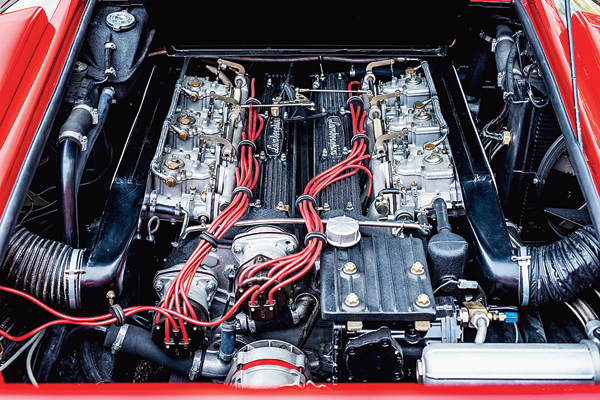
The tuned V12 placed longitudinally behind the driver provided not just power but the soundtrack as well
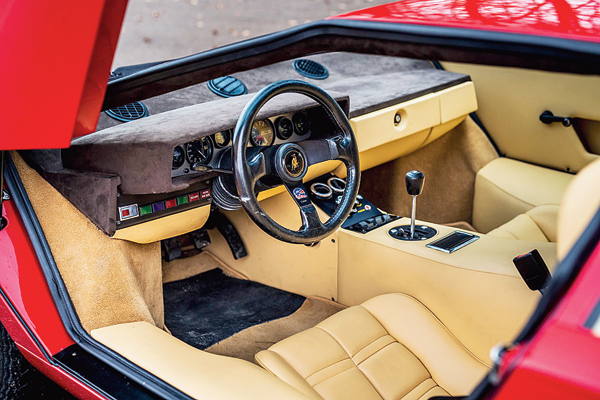
The inside was characteristic of the ’70s with an array of dials and switches
The Lamborghini stand at the Geneva Motor Show of 1971 had the Miura SV, the final version of the P400 sportscar, or the Miura, on display. The prototype of its successor, the Countach LP500, however, was placed at the stand of Carrozzeria Bertone, where the young designer Marcello Gandini, who designed the Miura, designed this car as well. The idea was that way both the cars would get the attention of visitors.
Conceptually, the second differed from the first in, among other ways, that it had the V12 engine placed longitudinally as opposed to the the Miura’s transverse placement, LP standing for ‘Longitudinale Posteriore’ in Italian. It also raised the tail section to achieve better aerodynamics. However, the design by Gandini was not as slippery through the air as it looked and needed quite a few additions to the bodywork to keep it stable at 300kmph-odd speed that it could do.
The SV turned out to be quite a different vehicle from the preceding Miuras.
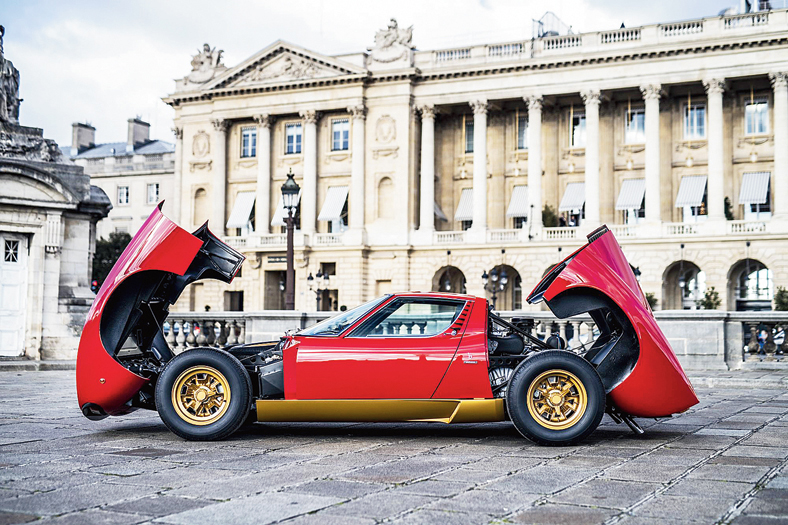
In its final SV iteration the Miura had lost some of the quirks of the original design like the headlamp strakes, but it could still stop people in their tracks when opened up to show the engine and front luggage area.
Giampaolo Dallara and Paolo Stanzani, Lamborghini’s chief engineers at the time, improved the car based on the experience of the previous five years. It was more powerful, 385hp at 7,850 rpm, and was more drivable, thanks to its improved torque spread. There were other changes beneath the skin as well, but, more importantly, the looks changed a little too.
It was significantly wider and had different size tyres front and back, with the ones at the rear being bigger. Gandini, who had overseen the original project, visually revised the car and the SV was characterised by wider rear fenders, different tail-lights, and a front bonnet with a new air intake for the radiator. In this form it would carry on for another couple of years before the company would pull the plug on it in 1973, with the Countach production models ready to hit the road in 1974.
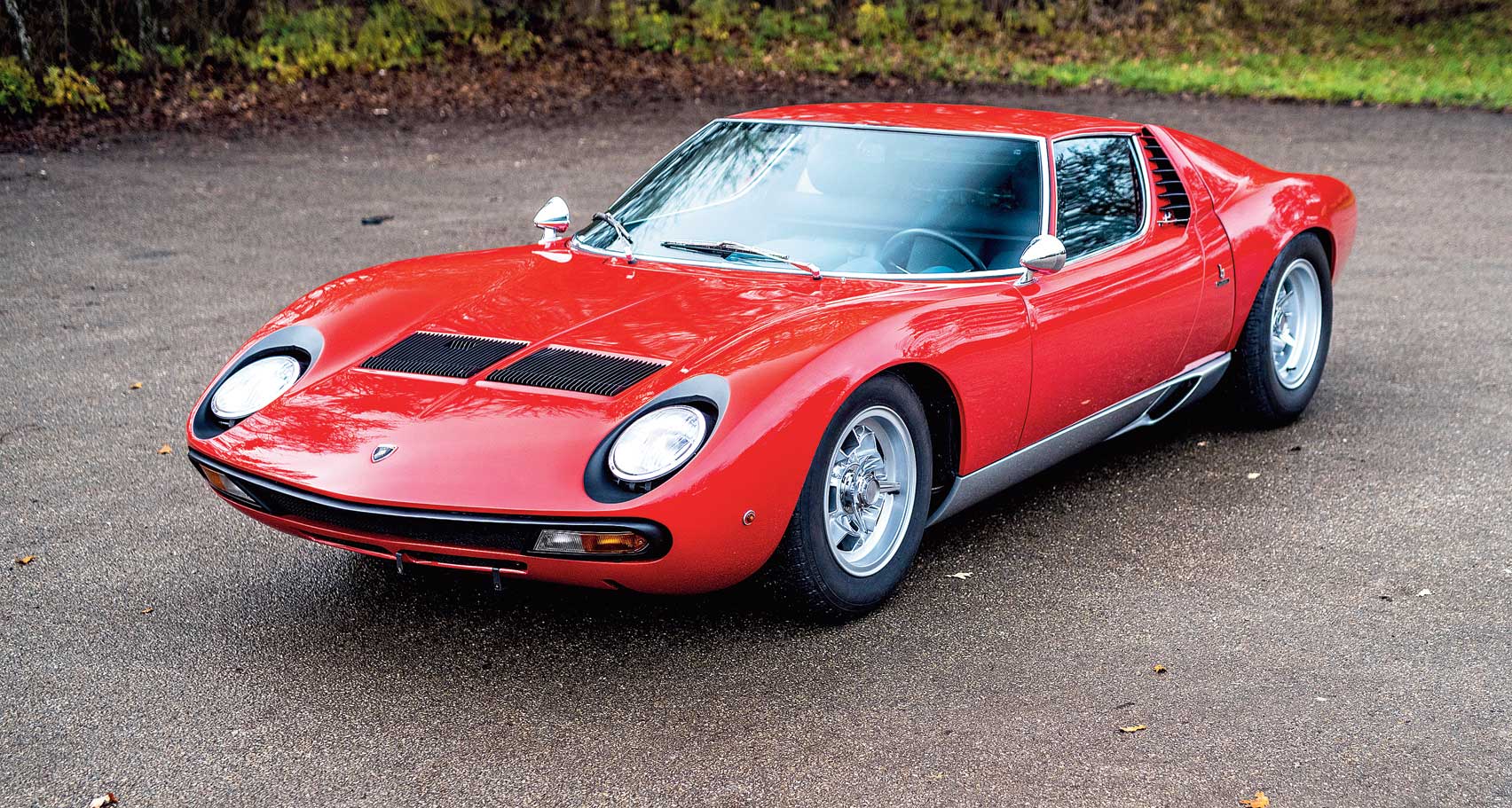
The beautiful, clean, futuristic lines of the Countach still look fresh today. Similar lines from Gandini characterised other cars of the era as well, one of the most notable of which was the Lancia Stratos sports car, whose lines were also penned by the same designer. Gandini was also responsible for the decision to use the scissor doors, which since that time have characterised the production of Lamborghini’s 12-cylinder models.
The LP 500 was a substantially different car than the Countach that would go into production in 1974. It had a platform frame rather than a tubular one, it was equipped with a 12-cylinder, 4,971cc engine (one of a kind), the engine air intakes had a shark gill design, and inside it featured sophisticated electronic instrumentation.
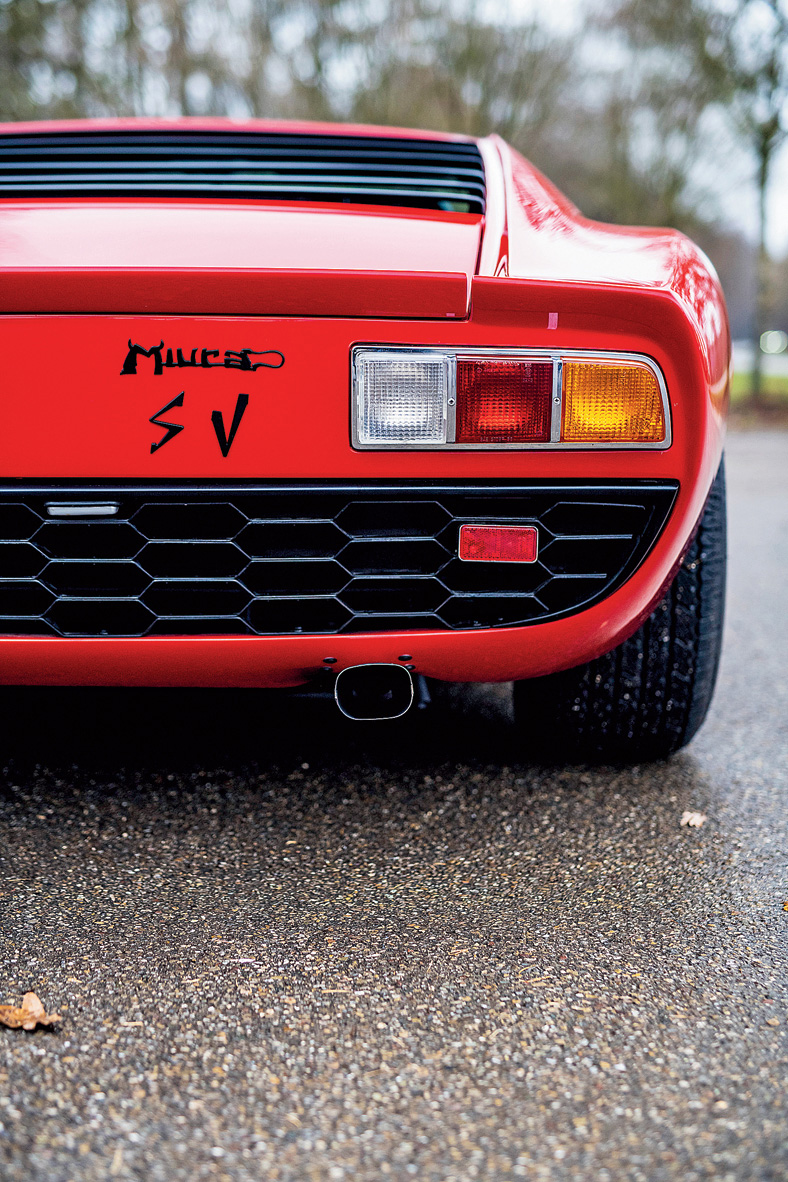
And as if it wasn’t fast enough already for its time, V for veloce (or speed) was added to the moniker, making it the SV
According to Lamborghini: “The origin of the name of this car lies in the dialect of the Piedmont region. In its final stages of assembly, the car was hidden in a shed for agricultural machinery on a farm near Grugliasco (province of Turin) to avoid possible work stoppages related to labour unrest, and was “discovered” by a farmer who exclaimed in amazement and enthusiasm, “Countach!” (a word in Piedmontese dialect expressing wonderment). When Piedmont-born Gandini came to know of it, he thought that it would have a particularly strong communicative force and also convinced Nuccio Bertone, Ferruccio Lamborghini and his colleague Paolo Stanzani of this.”
Following Geneva, Lamborghini’s chief test driver Bob Wallace used the car fitted with a more reliable 4-litre engine, for every possible kind of road test. It was finally used for a crash test and subsequently scrapped. From 1974 to 1990, 1,999 Countachs in five different series were produced, helping Lamborghini survive its most difficult years.











